Our participation in iNaturalist has created some discussion that has almost cleared up an enduring mystery about the identification of this creature: –
Image No.2555 from MLSSA Photo Index
(Taken by David Muirhead)
It has been some 11 years since my article titled Sponges of the Genus Ciocalypta was published in our May 2007 newsletter.
In that article, I wrote “I have long been intrigued by a species of Porifera (sponges) which displays little finger-like projections from below sand. There seemed to be two different kinds of this creature to me and I was never sure what they were. They could possibly have been anemones or ascidians. Over the years, however, I have been led to understand that they are a species of sponge.”
David Muirhead has provided three images of similar species in our Photo Index (described as the sprouting sand sponge) – slide numbers 2512, 2516 & 2555. He recently also posted this new (old) image on iNaturalist:-
David’s new (old) image of the sprouting sand sponge
(Taken by David Muirhead)
Suggesting that the species belonged to the Family Halichondriidae, David described it as “Possibly Sycon genus sponges on substrate at Grange Tyre Reef, an Artificial Reef in ~17-20m depth as boat dive off Adelaide northern metro coast. Date Oct 2, 1999.”
One response to David’s post was “In Europe, Polymastia penicillus looks like it. But in Australia… ?” David’s response was, “that is interesting because I had not seen this sponge taxon in SA waters till late last century and from memory and from my other photos of same species I’ve only seen it at degraded sites on silty sandy bottom close to population centres and shipping foci. So it may well be an introduced species. There are many such examples in other groups here including from the Mediterranean and wider Europe and Eurasia (classic example is the Mediterranean Fan worm S. spallanzanii).”
Another response received mentioned that some examples of the same sponge had been found at Kangaroo Island and these had been identified as genus Ciocalypta by a sponge authority. It was also noted that the same type of sponges was listed as “Suberites sp.” on page 64 in Karen Gowlett-Holmes’ “A field guide to the marine invertebrates of southern Australia” (2008) and also that the two genera (Ciocalypta & Suberites) are in different families. (Ciocalypta are described on page 58 of Marine Invertebrates of Southern Australia – Part I”.)
Another response came through saying, “Polymastia penicillus is very similar. Look here:
LE GRANCHÉ Philippe, BRETON Gérard in: DORIS, 18/12/2016: Polymastia penicillus (Montagu, 1814), http://doris.ffessm.fr/ref/specie/557 .” (The web page is in French.)
At this stage, I started adding the following comments of my own: –
“John NA Hooper wrote in Sponguide Aug 2000 about Ciocalypta, type species C.penicillus – with pointed, blind fistules; fistules characteristically semi-transparent parchment-like; with distinct ectosomal tangential reticulation of spicule tracts, occurring as bundles or single spicules, with ectosomal styles together with predominantly stylote choanosomal megascleres.
Also found “Two Chemomorphs of the Tropical Marine Sponge Ciocalypta Sp – The sponge Ciocalypta sp. played a key role in the development of the field of marine chemical ecology……..” “
“Described as the sprouting sand sponge in MLSSA Photo Index. PIs 2512, 2516 & 2555 all by David Muirhead. Check out details in MLSSA May 2007 newsletter at www.mlssa.asn.au http://seadragon.podzone.org/nletters/may2007.htm
“See http://www.academia.edu/8091850/First_record_of_Ciocalypta_Demospongiae_Halichondrida_from_Brazil_southwestern_Atlantic_with_the_description_of_a_new_species – Remarks. We recognize five species of Ciocalypta from the Atlantic Ocean, viz. C. gibbsi Wells, Wells & Gray, 1960 (North Carolina); C. penicillus Bowerbank, 1864 (originally NE and NW Atlantic, Caribbean, besides Mediterranean and several localities in the Indo-Pacific area); C. polymastia (Von Lendenfeld, 1888; Patagonia, besides E Australia and New Zealand); C. porrecta (Topsent, 1928; Cabo Verde) and C. pseudoporrecta (Van Soest & Stentoft, 1988; Caribbean).”
A response received stated, “it does look somewhat like Polymastia pencillus (a narrow, hollow, white, finger sponge from the UK, Mediterranean and Nth America), but not like Ciocalypta pencillus, nor C. porrecta, C. gibbsi or C. polymastia. The latter three are short yellow, pointed finger sponges, and polymastia lives in mud, in harbours. I don’t know what Ciocalypta pseudoporrecta looks like. For sponges, taxonomic descriptions don’t usually help unless one is looking at the spicules under a microscope. Also, I note that the KI examples (which look to be hollow, without a central axis – like P. pencillus) were from sand near an undisturbed reef, not near a shipping channel or port.”
At this stage, I was able to confirm that the species belonged to the Family Halichondriidae (and that it was therefore a member of Demosponges – Class Demospongiae), the family from which Ciocalypta & Polymastia come.
Here are image numbers 2512 & 2516 from our Photo Index: –
No.2512 at left shows the sponge’s finger-like projections as having pointed tips.
No.2516 at right shows the sponge’s finger-like projections as having blunt tips.
(Both images taken by David Muirhead)
As I wrote in Sponges of the Genus Ciocalypta in our May 2007 newsletter, “Marine Invertebrates of Southern Australia – Part 1”, edited by SA Shepherd & IM Thomas says that the sponge belongs to the Order Halichondrida. It goes on to say that it belongs to the Class Demospongiae. These are usually sponges with siliceous spicules and/or a fibrous skeleton (as explained on page 43). It also says that sponges of the Class Halichondrida are demospongiae in which microscleres are absent. Microsclere are said to be “a packing or reinforcing spicule, usually of a small size, frequently of ornate shape”. So sponges of the Class Halichondrida do not have these microsclere. They apparently have megascleres (instead?). These are said to be “a structural spicule”. The megascleres in sponges of the Class Halichondrida “are oxeas, styles or strongyles in many combinations”.
Oxeas are said to be “a diactinal megasclere (structural spicule) in which both ends are evenly tapered to points” (as in Fig 3.3a in the book – Representative megasclere (structural spicule) types of the Demospongiae).
Styles are said to be “a monoactinal megasclere (structural spicule) in which one end is evenly rounded and the other end is pointed” (as in Fig 3.3b).
Strongyle is said to be “a diactinal spicule in which both ends are rounded (as in Fig 3.3c).
“Marine Invertebrates of Southern Australia – Part 1” goes on to say that “The deeper parts of the spicule skeleton show no organization into fibre or spicule tracts. This dis-ordered skeleton is termed ‘halichondroid’. The superficial skeleton can be ordered into a tangential dermal skeleton and ectosomal spicule brushes (Fig.3.10).” Ectosome is said to be “a superficial region of the sponge not supported by any special spicule or collagen skeleton”.
“Marine Invertebrates of Southern Australia” says that the sponge also belongs to the Family Halichondriidae. It says that the principal megascleres (structural spicules) of sponges of this family “are oxeas rarely with accessory styles. A marked system of subdermal cavities sets the ordered tangential dermal skeleton off from the confused endosomal skeleton.” Endosome are said to be “all except the ectosomal structures of a sponge”.
The book lists two genera from the Family Halichondriidae – Halichondria and Ciocalypta. Sponges of the Genus Ciocalypta are said to have a “dense dermal skeleton” and a “marked ectosomal skeleton”. They are said to be a “Sponge with massive base and digitate oscular projections or stalked, lamellate shape”. Oscules are said to be ‘the exhalent openings of a sponge”. Ciocalypta species are said to be “Frequently found on sandy bottom”.
The “Reader’s Digest Book of the Great Barrier Reef” features a photo of a similar creature on page 158. It describes the creature as being a “yellow burrowing sponge” along with these comments: –
“Some sponges rely totally on chimneys for feeding while the bulk of the body is buried deep in the coral rock (sand?). Fine pores and canals at the base of the chimney convey water down to the sponge and the outcurrent water passes out through the top of the chimney.”
A caption for the photo of a different sponge on the same page gave similar details
i.e. “Some sponges use chimney-like structures to increase the flow of water through the canals. The canals that expel the water are raised up into the currents and act like a chimney to draw water in through many small pores, lower down the body.”
An explanation about these chimney-like structures starts on page 157 under the heading “Sponge Chimneys”. It says that many sponges have learnt to use the prevailing currents to drive water through the canals. They erect chimney-like structures into the water where the stronger currents are. The water passing over the chimneys creates an updraft causing the water to flow into the ostia (inhalent openings).
The next time that I read any details about these sponges was in the December 2005/January 2006 issue of Sportdiving magazine (Issue 113). It was on the pages of “Indo-Pacific Identity Crisis” by Neville Coleman (page 35). David and Leanne Atkinson had sent two photos in to Neville seeking identification of the creature(s). David and Leanne thought that they might have been ascidians. One of the photos showed the creature having pointer tips which tended to lay down more. The other photo showed a creature with blunt tips. Both photos were taken at Port Stephens, NSW at a depth of 8m. Neville was only aware of the fact that the two different photos depicted the same creature which he recognized as a sponge. Although he was unable to identify the species he gave it the common name of Sprouting Sand Sponge.
A recent search of the Internet came up with a short report titled “P-230: Two Chemomorphs of the Tropical Marine Sponge Ciocalypta Sp.” by Ryan Centko, Alan Maschek and Bill Baker (University of South Florida, Department of Chemistry, 4202 E Fowler Ave. CHE 205, Tampa, FL 33620) at: http://www.phcog.org/AnnualMtg/2006/papers/P_230.pdf . According to the report, the sponge Ciocalypta sp. played a key role in the development of the field of marine chemical ecology, being the first animal shown to produce a chemical defence toward another marine organism and due to its unique natural product chemistry. It seems that this sponge produces a number of defensive metabolites* belonging to the unusual family of “isocyano-functionalized sesquiterpenes”.
*(A metabolite is said to be a “Substance which takes part in a process of metabolism”. Most metabolites are said to be “made by the organism in the course of metabolism”. There are, however, exceptions. If the creature is unable to make them itself, it must take them in from the environment. In other cases, the creature may make part of the supply of a particular metabolite itself and also take part of it in from the environment.
Source: “A Dictionary of Biology” by Abercrombie, Hickman & Johnson (Penguin Reference Books).)
According to the report, two carbon skeletons have been found in the sponge, including the “isocyanopupukeanane and α-amorphene scaffolds”. Analysis of several Ciocalypta specimens revealed that an individual sponge produces only one of the two scaffolds as major products. The report concluded by saying “Thus we have identified an isocyanopupukeanane chemomorph and an α-amorphene chemomorph.”
(Below is a copy of the diagram of both an isocyanopupukeanane chemomorph and an Isothiocyanato-4-amorphene (α-amorphene chemomorph) that had featured on the web page at http://www.phcog.org/AnnualMtg/2006/papers/P_230.pdf . The page is no longer accessible though.)
Diagram of both an isocyanopupukeanane chemomorph and
an Isothiocyanato-4-amorphene (α-amorphene chemomorph)
(Source: http://www.phcog.org/AnnualMtg/2006/papers/P_230.pdf )
A further search of the Internet led to a large report titled “‘Sponguide’. Guide to Sponge Collection and Identification (Version August 2000)” by John N.A. Hooper of the Queensland Museum. I found it at: http://www.qm.qld.gov.au/organisation/sections/SessileMarineInvertebrates/spong.pdf .
Another version can apparently be found at: http://www.qmuseum.qld.gov.au/organisation/sections/SessileMarineInvertebrates/index.asp.
On page 69 of the ‘Sponguide’ I found these details about the Family Halichondriidae and Ciocalypta species: –
“FAMILY HALICHONDRIIDAE, VOSMAER, 1887.
SYNONYMS: Spongosoritidae Topsent; ? Petromicidae Topsent; Hymeniacidonidae de Laubenfels.
DEFINITION: Encrusting to massive growth forms, sometimes with specialised fistules on the upper surface; principle megascleres (structural spicules) are oxeas*, sometimes with accessory styles**; choanosomal skeleton consists of a high density of spicules arranged in vague, poorly defined, directionless tracts (“halichondroid” structure), or spicules in complete confusion; there is often marked subectosomal*** or vestibular cavities; microscleres (packing or reinforcing spicules) usually absent, occasionally raphides****.
SCOPE: 53 nominal genera are included in the family, of which only 16 appear to be valid.
REVIEWS: Bergquist (1970); van Soest et al. (1990), Diaz et al. (1991, 1992), Hooper et al. (1997).”
*(Remember that oxeas are said to be “a diactinal megasclere (structural spicule) in which both ends are evenly tapered to points”.)
**(Remember that styles are said to be “a monoactinal megasclere (structural spicule) in which one end is evenly rounded and the other end is pointed”.)
***(An ectosome is a superficial region of the sponge not supported by any special spicule or collagen skeleton.)
**** (A raphide is a thin oxeote microsclere (packing or reinforcing spicule).)
“Ciocalypta Bowerbank, 1863 (type species: Ciocalypta penicillus Bowerbank, 1863) (syn. Apatospongia Marshall, 1892; Leucophloeus Carter, 1883; Uritiaia Burton, 1932) – with pointed, blind fistules; fistules characteristically semi-transparent parchment-like; with distinct ectosomal* tangential reticulation of spicule tracts, occurring as bundles or single spicules; with ectosomal styles together with predominantly stylote choanosomal megascleres (from van Soest et al. 1990).”
*(Remember that ectosome is said to be “a superficial region of the sponge not supported by any special spicule or collagen skeleton”.)
REFERENCES:
“P-230: Two Chemomorphs Of The Tropical Marine Sponge Ciocalypta Sp.” by Ryan Centko, Alan Maschek and Bill Baker (University of South Florida, Department of Chemistry, 4202 E Fowler Ave. CHE 205, Tampa, FL 33620) at http://www.phcog.org/AnnualMtg/2006/papers/P_230.pdf .
“Marine Invertebrates of Southern Australia – Part I”, edited by SA Shepherd & IM Thomas, Government Printer, South Australia, 1982 (Chapter 3 (the Porifera section) by PR Bergquist & IG Skinner) – mlssa 1021.
Reader’s Digest Book of the Great Barrier Reef”, Reader’s Digest Services, Sydney, 1984, ISBN 0 949819 41 7.
December 2005/January 2006 issue of Sportdiving magazine (Issue 113) – “Indo-Pacific Identity Crisis” by Neville Coleman,
http://www.divetheblue.net/pdf/06IDCrisis01.pdf .
“A Dictionary of Biology” by Abercrombie, Hickman & Johnson, Penguin Reference Books, 1970.
“‘Sponguide’. Guide to Sponge Collection and Identification (Version August 2000)” by John N.A. Hooper of the Queensland Museum, either
http://www.qm.qld.gov.au/organisation/sections/SessileMarineInvertebrates/spong.pdf or
http://www.qmuseum.qld.gov.au/organisation/sections/SessileMarineInvertebrates/index.asp.
Reader’s Digest Book of the Great Barrier Reef”, Reader’s Digest Services, Sydney, 1984, ISBN 0 949819 41 7.”
We hope to find out more about these sponges in the near future.


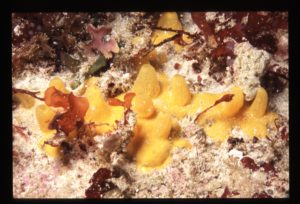
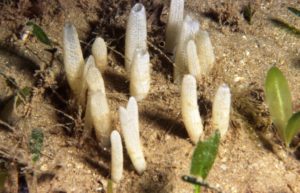
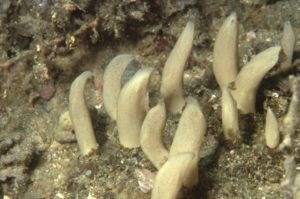
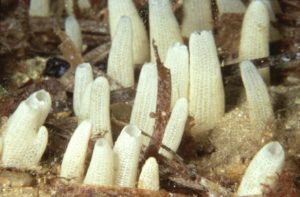
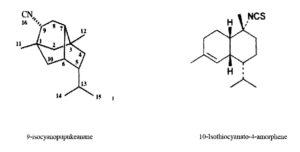
Brilliant, very thorough look at these vexatious sponges,Steve!